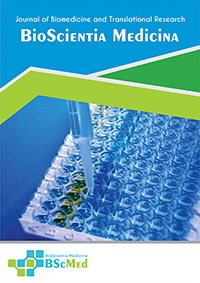Main Article Content
Abstract
Background: Early risk stratification in acute ischemic stroke (AIS) is critical for optimizing patient management. The roles of inflammation and thrombosis in stroke pathophysiology suggest that high-sensitivity C-reactive protein (hs-CRP) and D-Dimer may serve as valuable prognostic biomarkers. This study aimed to evaluate the independent and combined value of admission D-Dimer and hs-CRP levels for predicting neurological severity in AIS patients.
Methods: We conducted a prospective, cross-sectional study at Haji Adam Malik General Hospital, Medan, Indonesia, involving 60 consecutive AIS patients. Neurological severity was assessed upon admission using the National Institutes of Health Stroke Scale (NIHSS), with patients categorized into moderate (NIHSS 5-18) and severe (NIHSS >18) groups. Plasma D-Dimer and serum hs-CRP levels were quantified. Statistical analyses included the Mann-Whitney U test, Spearman's correlation, Receiver Operating Characteristic (ROC) curve analysis, and multivariate logistic regression to determine the independent predictive value of the biomarkers.
Results: Of the 60 patients, 31 (51.7%) were classified as having severe stroke. Both D-Dimer and hs-CRP levels were significantly higher in the severe group compared to the moderate group (D-Dimer: median 3220 ng/mL vs. 670 ng/mL, P<0.001; hs-CRP: median 5.6 mg/dL vs. 0.9 mg/dL, P<0.001). ROC analysis demonstrated strong predictive performance for severe stroke, with an Area Under the Curve (AUC) of 0.89 (95% CI: 0.81-0.97) for D-Dimer and 0.83 (95% CI: 0.72-0.94) for hs-CRP. A combined model incorporating both biomarkers yielded a superior AUC of 0.92 (95% CI: 0.85-0.99). In multivariate logistic regression, both elevated D-Dimer (Odds Ratio [OR]: 6.8, 95% CI: 2.1-22.5, P=0.001) and hs-CRP (OR: 4.5, 95% CI: 1.5-13.8, P=0.008) remained independent predictors of severe stroke after adjusting for age and gender.
Conclusion: Admission levels of D-Dimer and hs-CRP are powerful, independent prognostic markers for neurological severity in patients with acute ischemic stroke. Their use, particularly in combination, could enhance early risk stratification and guide clinical decision-making.
Keywords
Article Details
As our aim is to disseminate original research article, hence the publishing right is a necessary one. The publishing right is needed in order to reach the agreement between the author and publisher. As the journal is fully open access, the authors will sign an exclusive license agreement.
The authors have the right to:
- Share their article in the same ways permitted to third parties under the relevant user license.
- Retain copyright, patent, trademark and other intellectual property rights including research data.
- Proper attribution and credit for the published work.
For the open access article, the publisher is granted to the following right.
- The non-exclusive right to publish the article and grant right to others.
- For the published article, the publisher applied for the Creative Commons Attribution-NonCommercial-ShareAlike 4.0 International License.





